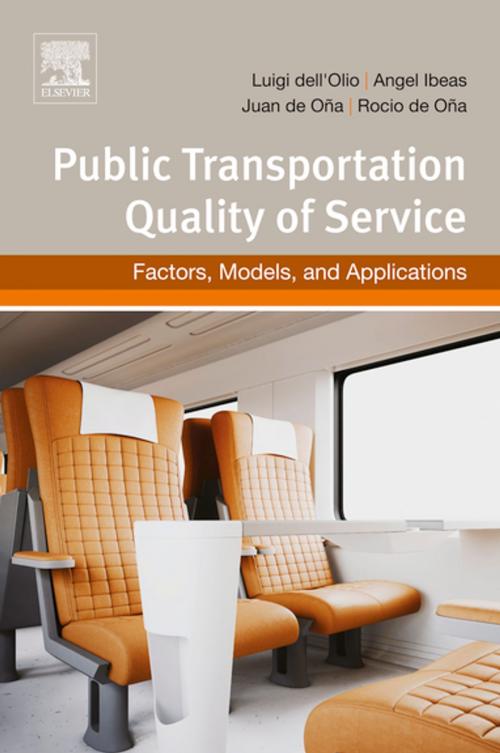Public Transportation Quality of Service
Factors, Models, and Applications
Nonfiction, Science & Nature, Technology, Engineering, Automotive, Reference & Language, Transportation| Author: | Angel Ibeas, Luigi Dell´Olio, Juan de Ona, Rocio de Ona | ISBN: | 9780081022795 |
| Publisher: | Elsevier Science | Publication: | October 11, 2017 |
| Imprint: | Elsevier | Language: | English |
| Author: | Angel Ibeas, Luigi Dell´Olio, Juan de Ona, Rocio de Ona |
| ISBN: | 9780081022795 |
| Publisher: | Elsevier Science |
| Publication: | October 11, 2017 |
| Imprint: | Elsevier |
| Language: | English |
Public Transportation Quality of Service: Factors, Models, and Applications is the first book to help researchers better understand the contributing factors that can improve public transportation perception among users. The book compiles in one place metrics currently dispersed in journal articles, government publications and book chapters. It critically analyzes currently available modeling methodologies such as the Ordered Logit/Probit model and Models of Structural Equations, highlighting their advantages and disadvantages. The book addresses models of desired quality, including the views of users and non-users, discussing the gap between desired and perceived quality.
The book also examines data mining approaches such as decision trees and neural networks, showing how to involve the public in the decision-making process to create policies that encourage public transport demand. Measuring passenger’s views on public transportation is of critical concern to promote wider transit use in cities around the world.
- Includes insights from both theoretical and practical points of view for both researchers and practitioners
- Features case studies in each chapter that apply models discussed
- Helps readers develop and design their own studies for measuring quality of service
- Shows how to include perceived quality in contracts
- Provides access to the survey formulas and data to better enable implementation of models
Public Transportation Quality of Service: Factors, Models, and Applications is the first book to help researchers better understand the contributing factors that can improve public transportation perception among users. The book compiles in one place metrics currently dispersed in journal articles, government publications and book chapters. It critically analyzes currently available modeling methodologies such as the Ordered Logit/Probit model and Models of Structural Equations, highlighting their advantages and disadvantages. The book addresses models of desired quality, including the views of users and non-users, discussing the gap between desired and perceived quality.
The book also examines data mining approaches such as decision trees and neural networks, showing how to involve the public in the decision-making process to create policies that encourage public transport demand. Measuring passenger’s views on public transportation is of critical concern to promote wider transit use in cities around the world.
- Includes insights from both theoretical and practical points of view for both researchers and practitioners
- Features case studies in each chapter that apply models discussed
- Helps readers develop and design their own studies for measuring quality of service
- Shows how to include perceived quality in contracts
- Provides access to the survey formulas and data to better enable implementation of models















